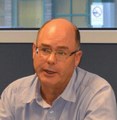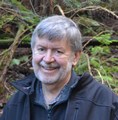YOU TUBE VIDEO: "Local governments can build a strong financial case for protecting, preserving and replanting trees as service providers," stated Judith Walker, Village of Cumberland planner

Trees provide many benefits including beauty, shade, habitat and rainfall interception and storage. “We talk about Tree Protection Bylaws, but it really is about Tree Protection,” stated Judith Walker. “Only recently have we started to actually account for the economic value of the benefits provided by trees. Over the long term, the cost is significantly less than that for hard infrastructure, and with the added benefit of a much longer replacement cost cycle.”
Beyond the Guidebook 2015: Nanaimo Region’s Julie Pisani describes how their ‘Regional Team Approach is founded on Sustainable Partnerships’

“Among the many partners it takes to tackle these issues, the First Nations in our region are likely the most important. The traditional knowledge and indigenous value of the land and the water is a realm of knowing that our scientific method does not touch,” wrote Julie Pisani. “Conversations about what we care about, stories about the past which help us understand the present, and dialogue about the future and positive vision about what that may look like.”
YOU TUBE VIDEO: Judy Walker, Village of Cumberland planner, explains how rain gardens help achieve watershed goals

When sites get the topsoil part right, other parts of the water sustainability equation are easier to attain. “One tool that we hear a lot about is rain gardens. Topsoil and/or amended soil is key for water retention, and that is one feature of rain gardens that makes them so effective for water storage,” stated Judith Walker. “Soil depth creates a sponge which can limit runoff during wet weather; and reduce water need during dry weather.”
YOU TUBE VIDEO: "The Water Balance Express provide us with a means to engage and educate homeowners and the development community on what is possible," concluded Glenn Westendorp, Town of Comox works superintendent

“Slow it – Sink it – Spread it. This simple saying summarizes the means by which we can manage Rain Water to alleviate both drought and flooding. This saying also summarizes the purpose behind the Water Balance Model Express,” stated Glenn Westendorp. “The Express allows home owners and small developers the ability to explore the means by which they can compensate for their effects on the environment and our aging infrastructure.”
YOU TUBE VIDEO: "Comox Vally will be our demonstration region for Water Balance Methodology accreditation," stated Kim Stephens at Joint Staff Workshop

“We see there is a gap in practitioner education and professional development. Our objective is to create a pool of trained and qualified practitioners of the Water Balance Methodology. From a local government perspective, you have to know what it is you want so that you know that you are getting the right stuff. And you need that assurance that what you are getting in the way of analyses is being completed correctly,” stated Kim Stephens.
Beyond the Guidebook 2015: Time-Line highlights milestones for “watershed-based approach” in Nanaimo Region

“A growing population combined with known negative impacts created the need to tackle issues of groundwater depletion, stream degradation, surface water contamination and the changes climate change will bring. Land use planning and development standards cannot be effectively modified without a clear understanding of our water resources, where they are changing and why,” states Mike Donnelly.
YOU TUBE VIDEOS: Comox Valley Joint Staff Workshop generated an abundance of ideas for "continuing the conversation", reports Alexandra Hitchcock

“The workshop concluded with a group activity which provided everyone with the chance to brainstorm about they had learned from a series of presentations by members of the Comox Valley-CAVI regional team,” explains Alexandra Hitchcock. “Out of this process came a selection of ideas and suggestions to implement ‘collaboration communication’ sessions.
YOU TUBE VIDEO: "We are sharing and learning together about how to restore the Water Balance, build resiliency and adapt to a changing climate," stated Kris La Rose in his closing remarks at the Comox Valley Joint Staff Workshop

“In 2016, we will be rolling out some form of training for the Water Balance Express as we develop an implementation strategy for Water-Wise Land Development. We also be further developing and enhancing the Water-Wise website as a communication tool to support a consistent approach to protection of watershed function in the built environment,” stated Kris La Rose.
Beyond the Guidebook 2015 showcases “The Story of Convening for Action in the Capital Region”

“The program began in 1983 as an engineering response to high levels of fecal coliform on local beaches,” reports Dale Green. “CRD has since undergone a transition, from ‘stormwater-based thinking’ that is narrowly focussed, to ‘watershed-based thinking’ that is holistic in approach. The broadening of scope is reflected in the re-naming of the Stormwater, Harbours and Watersheds Program (SHWP). In 2012, the program became the Integrated Watershed Management Program (IWMP).”
Beyond the Guidebook 2015: Capital Region’s Jody Watson reflects on “Creating a new ‘Land Ethic’ through Integrated Watershed Management”

“The multi-jurisdictional nature of our watersheds requires the collective commitment of local and senior government agencies, First Nations, and communities to improve the health of our watersheds. Utilizing a ‘Design with Nature’ approach, we are changing the way we develop our land by attempting to re-engineer the hydrological function back into our urban landscape. We are, in some ways, cultivating a new land ethic,” wrote Jody Watson.

